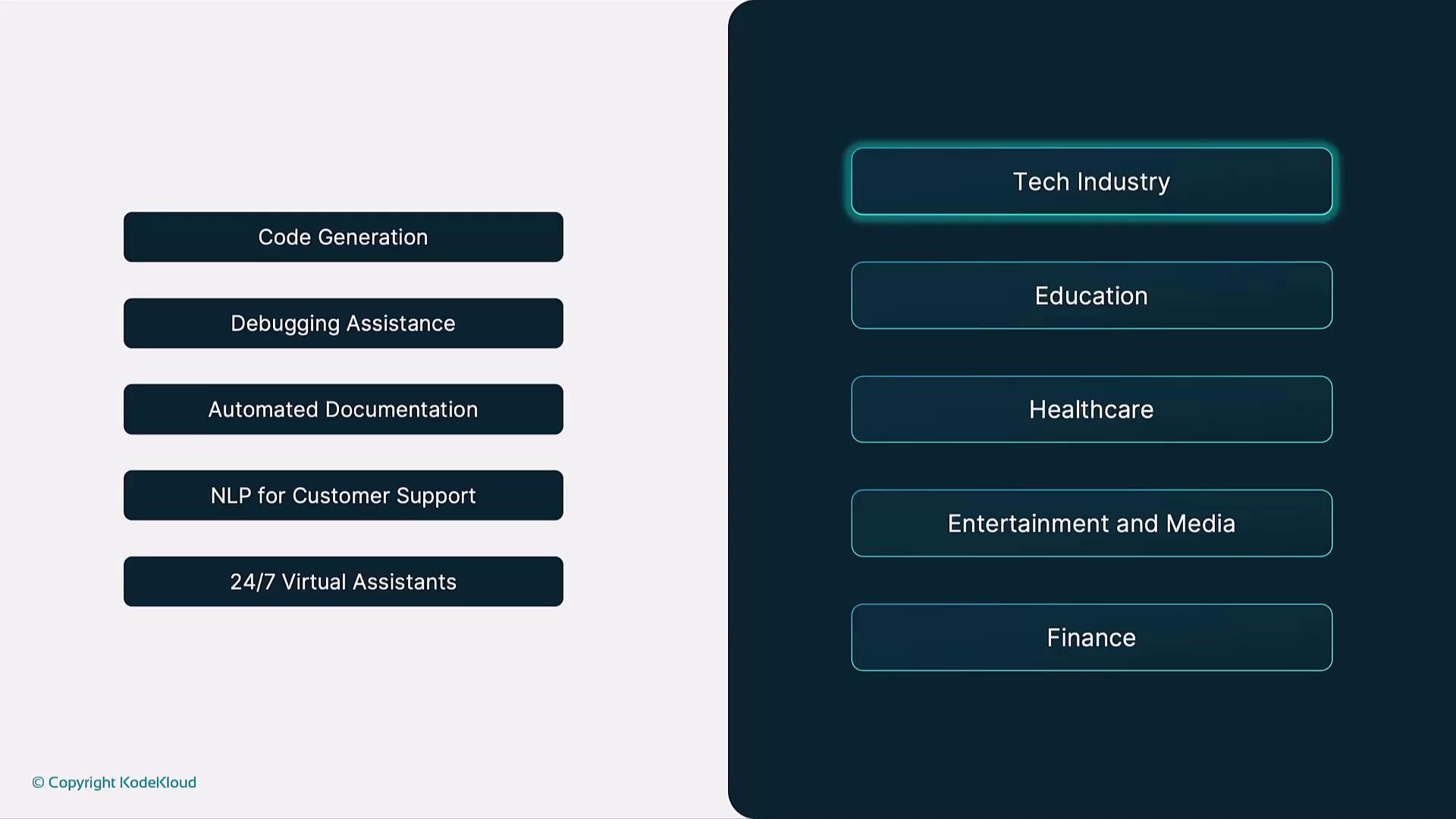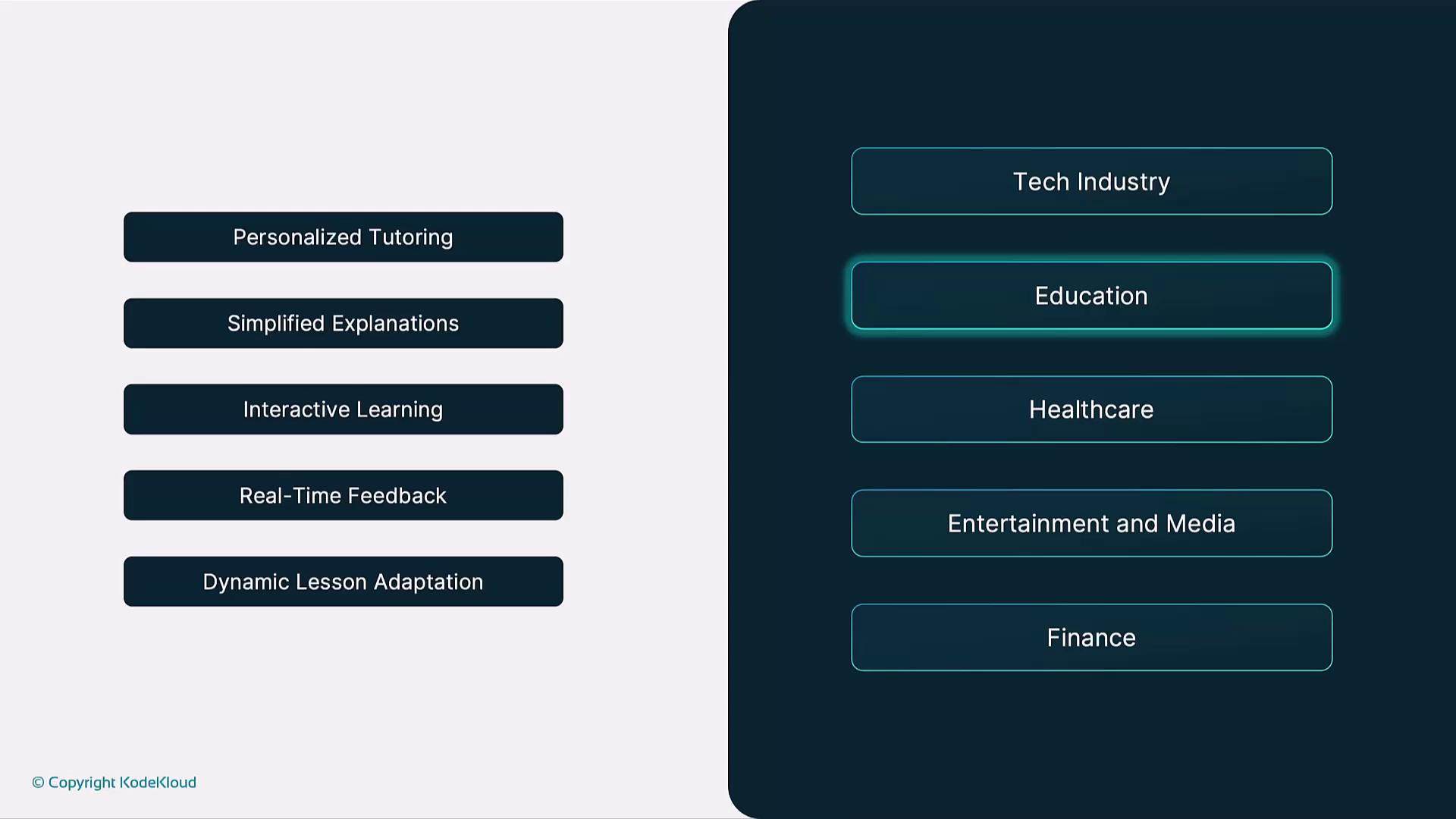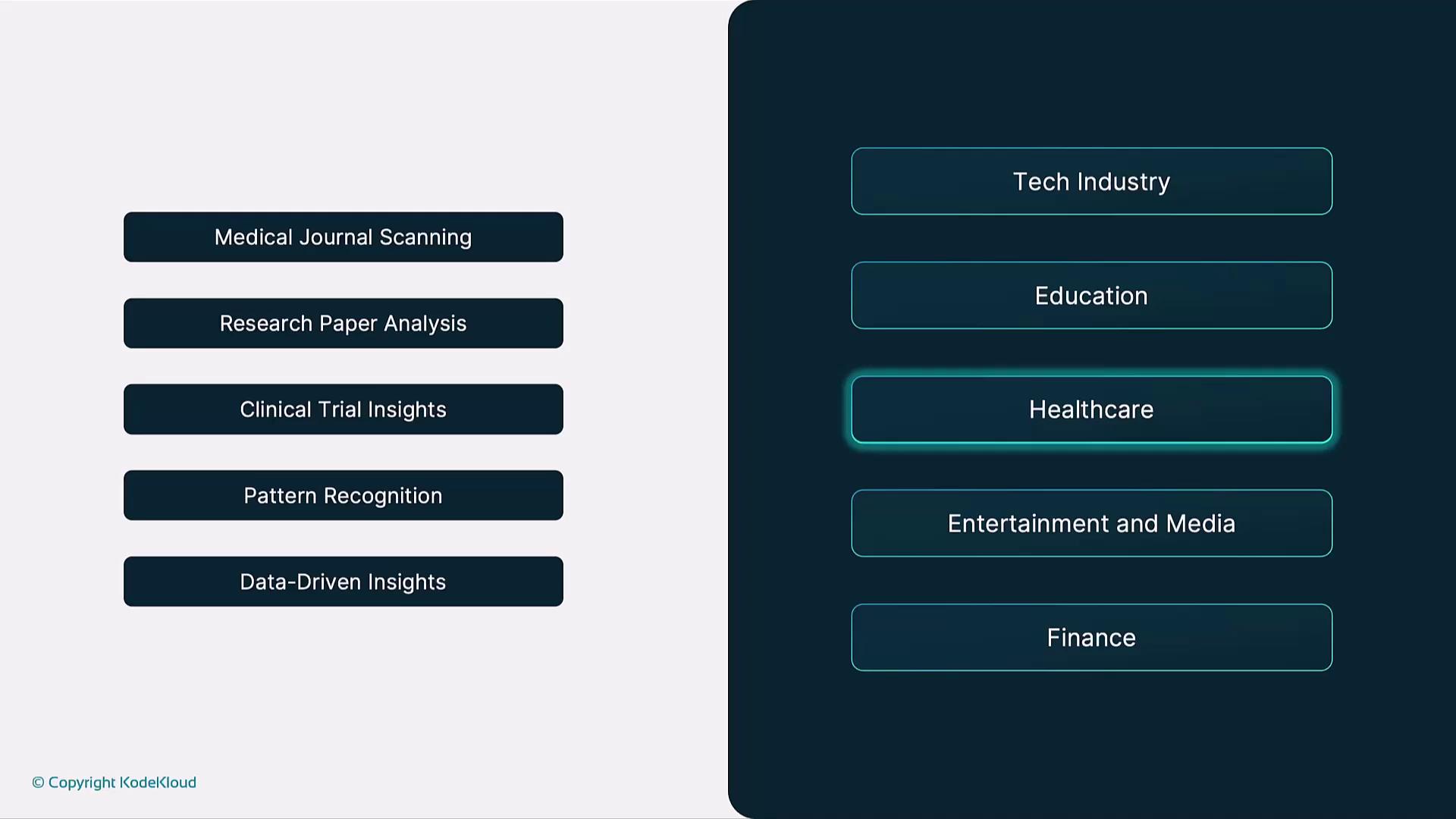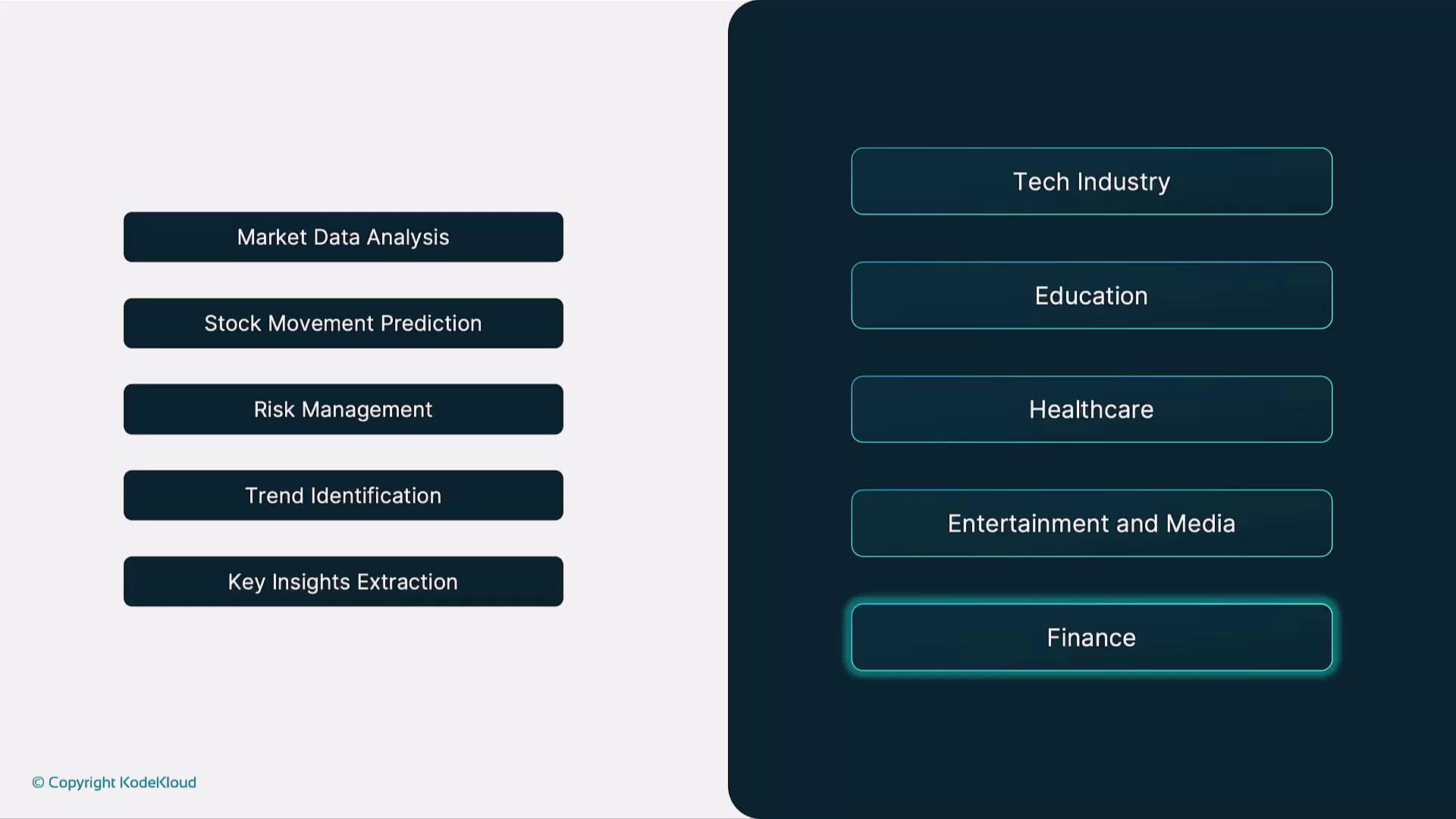Introduction to OpenAI
Pre Requisites
Benefits of OpenAI for Industries
Discover how OpenAI’s cutting-edge models like GPT-4 and DALL·E deliver transformative solutions across five core sectors:
- Tech Industry
- Education
- Healthcare
- Entertainment & Media
- Finance
| Industry | Key Advantages | Example Solutions |
|---|---|---|
| Tech Industry | Automate code generation, debugging, support | GitHub Copilot, Custom AI Chatbots |
| Education | Personalized tutoring, automated content creation | AI-based quizzes, Essay feedback |
| Healthcare | Research summarization, diagnostic assistance | Clinical data parsing, Cancer summaries |
| Entertainment & Media | Scriptwriting, concept art, dynamic dialogue | GPT-4 storylines, DALL·E imagery |
| Finance | Market analysis, risk management, fraud detection | ETF comparison, Transaction monitoring |
Tech Industry
OpenAI accelerates software development by handling routine tasks—everything from boilerplate code generation and automated debugging to comprehensive documentation. Developers can devote more time to innovation while AI tackles the repetitive work.
For example, GitHub Copilot integrates GPT-4 to offer real-time code suggestions and inline documentation. Beyond code editors, companies embed GPT models into chatbots and virtual assistants for 24/7 customer support. Platforms like Shopify use AI-driven bots to handle common inquiries, freeing human agents for complex issues.

Education
AI-powered platforms offer dynamic, personalized learning experiences. GPT-4 analyzes each student’s performance to generate:
- Custom lesson plans and quizzes
- Instant essay and problem-set feedback
- Adaptive exercises tailored to individual learning paths
Educators can also automate content creation—slide decks, study guides, and summaries—streamlining curriculum development.

Example: Translate a sentence using GPT-4
from openai import OpenAI
client = OpenAI()
response = client.chat.completions.create(
model="gpt-4",
messages=[
{"role": "system", "content": "Translate the following English sentence into French."},
{"role": "user", "content": "My name is Jane. What is yours?"}
],
temperature=0.7,
max_tokens=64
)
print(response.choices[0].message.content)
Note
Make sure your OPENAI_API_KEY is set as an environment variable before running any examples.
Healthcare
GPT-4 streamlines medical research by summarizing vast volumes of journal articles, clinical trial reports, and research papers. Clinicians can:
- Extract critical insights from large datasets
- Identify patterns in patient histories
- Summarize cancer research or drug discovery findings
In clinical settings, AI-powered diagnostics analyze imaging scans, lab results, and electronic health records to support more accurate diagnoses and predict patient outcomes.

Example: Parse a patient’s medical history into CSV format
from openai import OpenAI
client = OpenAI()
response = client.chat.completions.create(
model="gpt-4",
messages=[
{"role": "system", "content": "Parse the following unstructured medical history into CSV format."},
{"role": "user", "content": "Patient has a history of hypertension and diabetes."}
],
temperature=0.7,
max_tokens=150
)
print(response.choices[0].message.content)
Warning
Always review AI-generated medical summaries with qualified healthcare professionals.
Entertainment & Media
Creative teams leverage GPT-4 to draft narratives, dialogues, and lyrics:
- Outline story arcs and character development
- Brainstorm plot twists and alternate endings
- Generate interactive NPC dialogues in games
Meanwhile, DALL·E converts text prompts into high-quality concept art and storyboards, accelerating visual prototyping.
Example: Perform sentiment analysis on social media feedback
from openai import OpenAI
client = OpenAI()
response = client.chat.completions.create(
model="gpt-4",
messages=[
{"role": "system", "content": "Classify the sentiment of the following tweet: positive, neutral, or negative."},
{"role": "user", "content": "I loved the new Batman movie!"}
],
temperature=0.7,
max_tokens=64
)
print(response.choices[0].message.content)
Finance
OpenAI models process extensive financial data to uncover trading signals, forecast market trends, and manage risk. Common use cases include:
- Real-time sentiment analysis of news and social media
- Automated detection of fraudulent transactions
- Comparative analysis of investment vehicles

Example: Compare two exchange-traded funds
from openai import OpenAI
client = OpenAI()
response = client.chat.completions.create(
model="gpt-4",
messages=[{"role": "user", "content": "Analyze the pros and cons of VOO vs. TGRO."}],
temperature=0.8,
max_tokens=150
)
print(response.choices[0].message.content)
Links and References
Watch Video
Watch video content